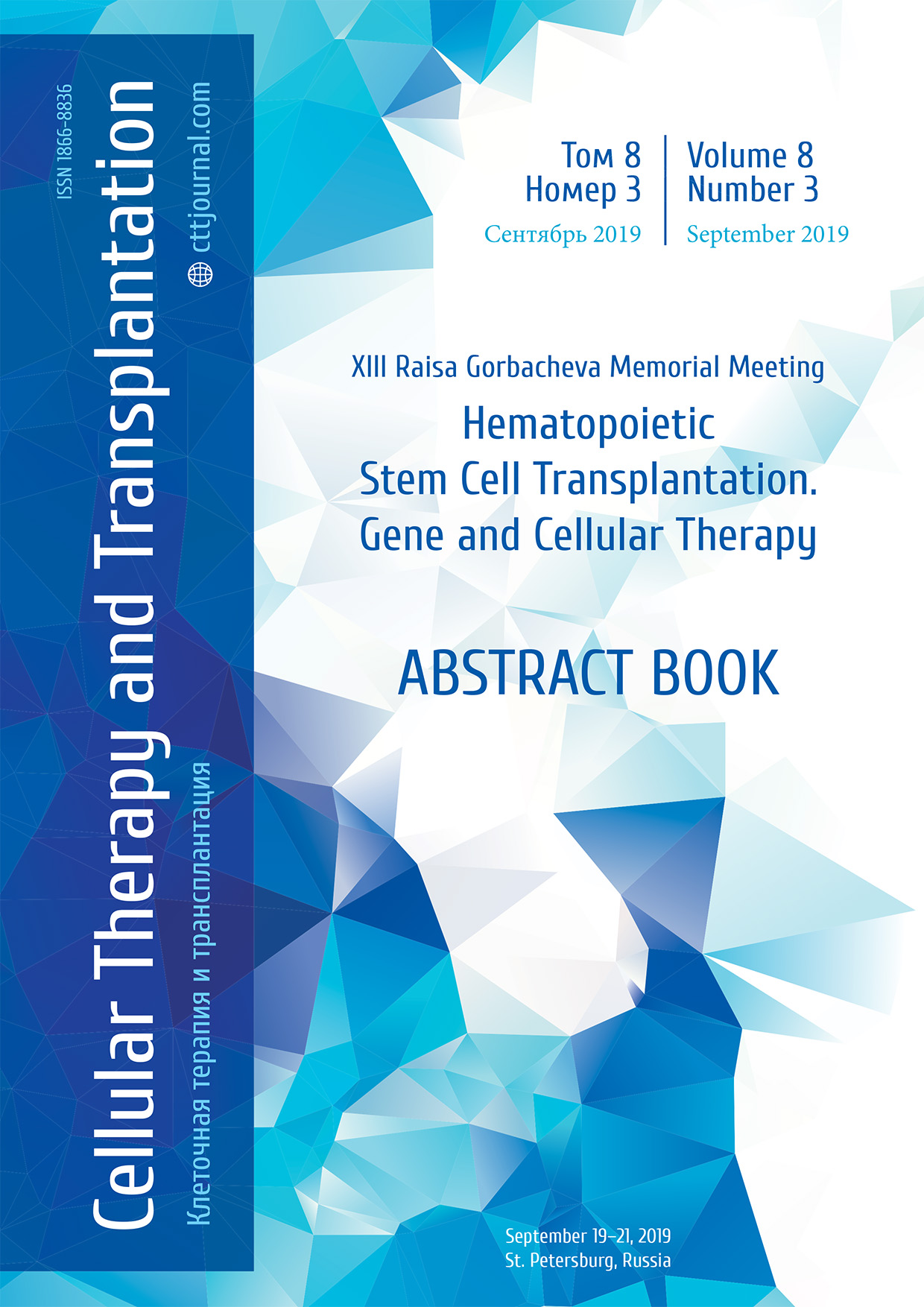Comparative analysis of the five-locus high-resolution HLA haplotype frequencies in the donors from two Russian registers
Elena V. Kuzmich1, Olga A. Makarenko1, Mikhail N. Vavilov2, Elena I. Shagimardanova3, Raushania F. Gaifullina3, Anna V. Andryushkina1
1 Vasya Perevoshchikov National Bone Marrow Donors Registry, Moscow, Russia
2 Chelyabinsk State University, Chelyabinsk, Russia
3 Institute of Fundamental Medicine and Biology, Kazan (Volga Region) Federal University, Kazan, Russia
Contacts: Dr. Elena V. Kuzmich, PhD
E-mail: yelenakuzmich@gmail.com
Summary
Expansion of the Russian donor registries network is an important task seeking for increase of the unrelated donor search efficiency for Russian patients. Different strategies need to be applied for recruiting a larger number of potential donors as well for increasing HLA diversity of the pool. The aim of our study was to compare the haplotype frequencies based on five-locus high-resolution typing of potential donors from two Russian registers.
Materials and methods
A cohort of the Vasya Perevoshchikov National Bone Marrow Donors Registry (National BMDR) included 1563 donors. HLA-typing was performed by the Next Generation Sequencing (NGS technique). The data analysis was carried out by Harlequinе program version 3.5 with using the expectation-maximization algorithm for the determination of five-locus haplotype frequencies. The data published by the Bone Marrow Donors Registry of I. Pavlov First Saint-Petersburg State Medical University (Registry of I. P. Pavlov SPbSMU) were used for comparative analysis [1]. The results of HLA typing by monoallelic Sanger sequencing for 1000 donors are presented in this study.
Results
1439 different haplotypes were detected in the National BMDR donors’ group. In the cohort of the I. Pavlov SPbSMU Registry, 1352 haplotypes were defined. A*01:01:01-B*08:01:01-C*07:01:01-DRB1*03:01:01-DQB1*02:01:01 proved to be the most frequent haplotype in the comparison groups (Table 1). This haplotype is mostly represented in the majority of European populations (http://www.allelefrequencies.net). The A*02:01:01-B*13:02:01-C*06:02:01-DRB1*07:01:01-DQB1*02:02:01 haplotype is more common in the cohort of National BMDR (2.66% versus 1.01%, p=0.00005). There is a trend for higher frequency of A*03:01:01-B*07:02:01-C*07:02:01-DRB1*15:01:01-DQB1*06:02:01 haplotype in the cohort from I. Pavlov SPbSMU Registry (3.12% versus 2.43%, p=0.15). A*30:01:01-B*13:02:01-C*06:02:01-DRB1*07:01:01-DQB1*02:02:01 haplotype is common among the National BMDR donors. This haplotype is, however, not frequent among donors of I. Pavlov SPbSMU Registry.
Table 1. Most common 5-locus haplotype frequencies obtained by high-resolution typing (%) in the donors of two Russian registries

Conclusion
Both registers attract volunteers from the Russian Federation regions, nevertheless, there are some differences in the five-haplotype haplotypes distribution. Collaborative work of all Russian registries is a way to increase the HLA pool represented in the Russian search systems and to increase the efficiency of the unrelated donor search for Russian patients.
Reference
E.V. Kuzmich, A.L. Alyanskiy, V.V. Ermolina et al. Experience of the sequencing method application for the immunogenetic testing of the potential donors in the Bone Marrow Donor Registry of I. P. Pavlov SPbSMU. Transfusiologiya. 2018; 19 (4):49-58 (In Russian).
Keywords
Bone marrow donor, registry, HLA haplotypes, frequency.


